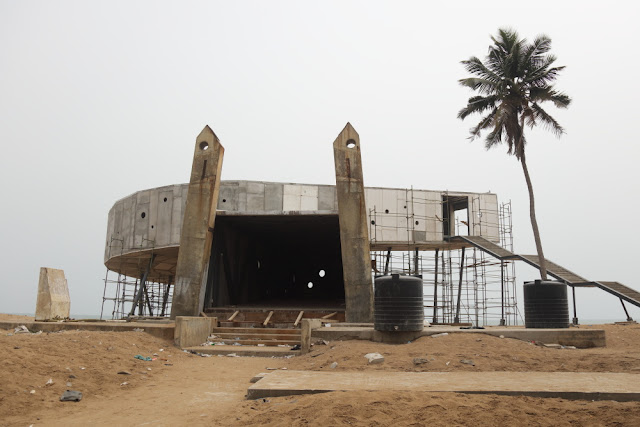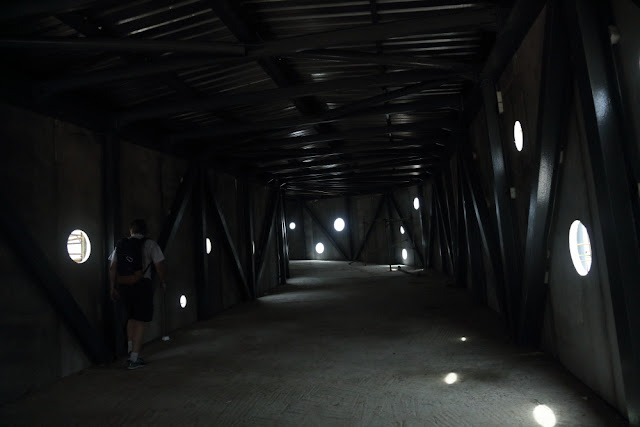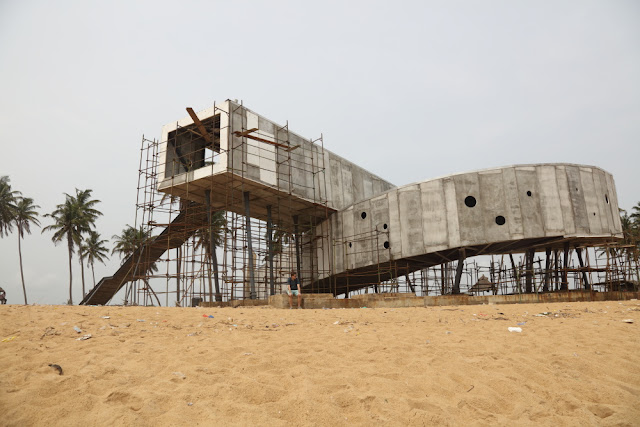 |
| a new addition to the point of no return |
The point of no return in Badagry used to be materialised by two concrete obelisks, slightly inclined and pointed towards the sky. It conveyed, very simply, the sense of a gate towards the unknown, erected at the end of the sand track that separates the lagoon from the ocean.
The two pillars were small compared to the slender neighbouring coconut trees planted along the beach.
Tourism has always been a dream for Nigerian developers, especially coastal historical sites, that are fairly close to Lagos. Badagry with its pivotal role in the history of slavery is a perfect candidate. But so far, the place is not exactly a hotspot to attract tourists usually looking for nice beaches, comfortable accommodation and nice restaurants. Badagry rather feels like a place where something happened a long time ago, a place that has fallen into oblivion and been left to decay absent-mindedly.
Could this be about to change? There are a number of projects to develop the site. Ambitious for some that have the necessary scale to fire-up the imagination at the prospect of quick and juicy returns promised by an optimistic business case.
As we speak, one project is about to be completed: a new monument to complement or perhaps replace the tired concrete pillars. The construction is an alpha-shaped tunnel ascending through the air. The walls are made of polystyrene, reinforced with metal on the outside, and pierced with a few circular openings. The tunnel finally opens on the ocean and has a lateral staircase exit. Apparently the monument will be air-conditioned to provide comfort to visitors who have come a long way without necessarily knowing what to expect and may actually never return to this place after having seen it.
 |
| from concrete obelisks to polystyrene serpentine |
 |
| inside the serpentine |
 |
| view from the sea of the new point of no return |
Comments
Post a Comment